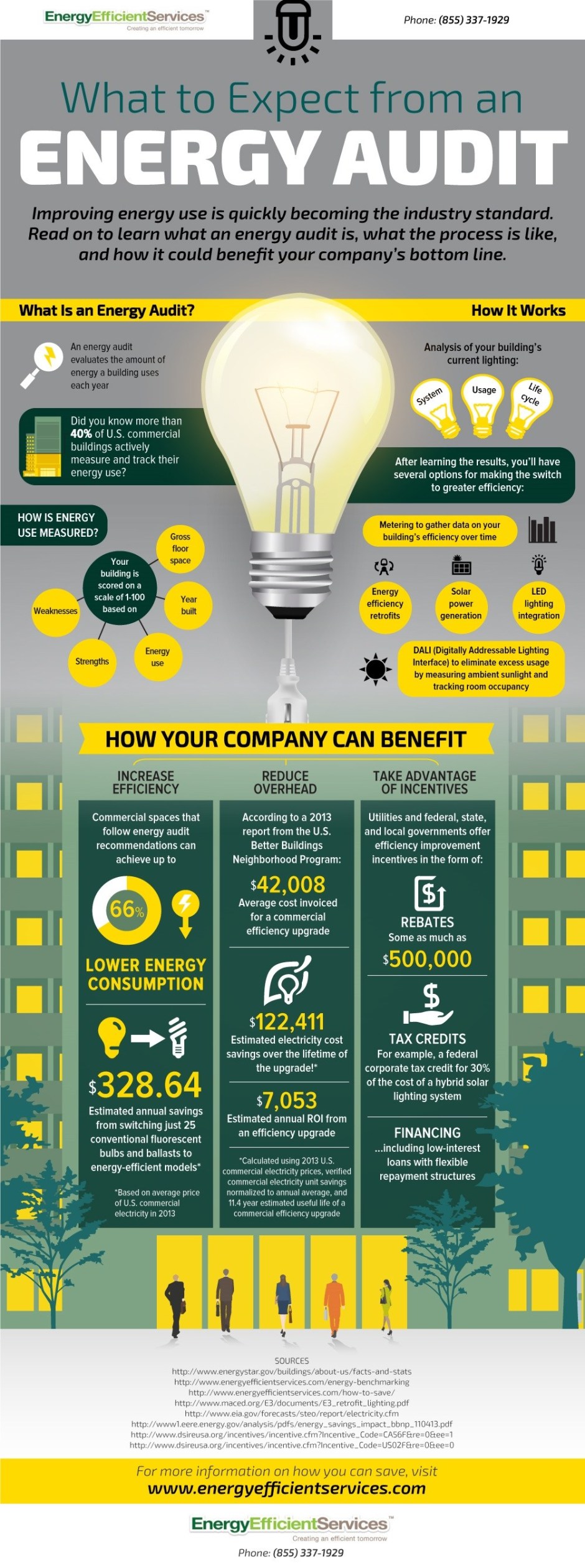You should see LOTS of numbers. Doing a business energy audit is really an exercise in math. You have to compare existing systems against old systems, dollar savings, and costs related to making a good business decision.
In the end, you should be able to understand what you have now, and how you will save money by doing this project.
2. Product Recommendations-
What type of equipment is being proposed, which model it would be, if it’s light fixtures, or an occupancy sensor.
Typically, you’d want to see the spec sheets for those. Engineering spec sheets should give it to you down and dirty so that you know what you’re getting.
3. Photometric Layouts-
Areas where you’re very concerned about the light levels, you definitely want to have a photometric layout. You should also have a listing of your foot candle readings before and after.
That may not necessarily be in every area, such as a parts department or a locker room area. You shouldn't worry about this in areas that are not mission critical.
4. Detailed Quantities -
You need to know what you are getting to replace the existing system that you have. The reason that is important is if you have 40 fixtures in an area, and they’ve been replaced with 16, that may not make sense, so you want those before quantities and the after quantities.
5. Unique Site Conditions-
Also, you might see some specification of unique site conditions, or maybe issues that might be seen in the installation. That doesn’t come up very often, but it could even be work hours and that type of thing.
Even if those are not presented, don't forget about working hours, production, noisy environments and accessibility.
6. Benefits Of the New Equipment-
You’d want to know what the benefits of the new equipment are.
In an area where we were re-doing the body shop lighting, we talked about CRI when we presented to the owner as well as Kelvin values. We pointed that out very clearly in our presentation.
We felt it was very important that they had increased lighting levels, and they had the ability to create higher quality work. The staff told us what they needed and we highlighted that in our presentation.
So we were sure to point out why we specified this equipment. There was definitely a cheaper alternative light fixture, but there was a reason why we chose the more expensive alternative for those areas. We detailed that difference in our presentation so you should expect that as well.
7. Utility Rebate Calculations-
Depending on your utility, there could be two sheets to fill out or 25 sheets to fill out, it just depends on your utility and the different types of fixtures you have and that type of thing.
Bottom line here is that you want to know why you qualify and how you qualify because if you are making financial decision with the incentives as part of the consideration, then you want to make sure that you qualify.
If you do not meet the qualifying factors, you will not get the money.
8. Warranty-
Any good contractor should be giving you a warranty and a lot of these newer products have good warranties that come with them, so warranties should definitely should be on your radar screen, just to make sure that even after your project is done, you will be supported.
There are many benefits to energy efficiency for your business, but you have to make sure that you are getting all the right facts. Updating your facility is a cost reduction strategy that will require some level of investment, so insuring that you have all the facts is critical for making a good business decision.
Learn More About the Benefits of Energy Efficiency
Download our FREE e-book to learn more about how you business can benefit from energy efficient technologies.
Other Related Articles You May Enjoy....
Do Your Own Commercial Energy Audit and Instantly Pocket More Money[Part 1]
How toTake Advantage of Incentives for Energy Efficiency
How To Finance Energy Saving Solutions With No Out-Of-Pocket Cost

